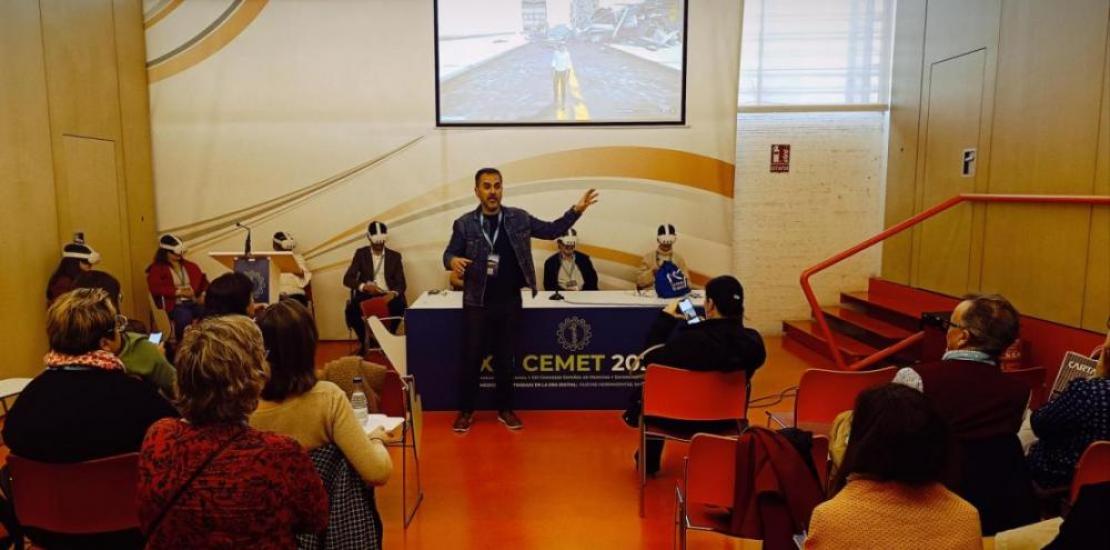UCAM Places Virtual Reality at the Service of Healthcare
The vice-dean of UCAM, Manuel Pardo, has conducted a seminar on training in Cardiopulmonary Resuscitation in simulated environments, as part of the II International Congress and XIII Spanish Congress of Occupational Medicine and Nursing, organised by the Spanish Association of Medical Specialists in Occupational Medicine
As a pioneering institution in the use of New Technologies in the academic field, and especially in the field of health, UCAM has actively participated in the International Congress on Occupational Medicine and Nursing, which has brought together more than 400 specialists from all over the world in Cartagena since Thursday.
On the last day of the congress, the event included a seminar focusing on CPR training through the use of Virtual Reality glasses. Manuel Pardo, vice-dean of UCAM and health emergency professional, conducted this session, where ‘an immersive experience was generated, simulating a pre-hospital cardiac arrest outside a healthcare area, where the student had to make decisions and, if they did not make the right choice, the system would tell them why’, explained Pardo.
The seminar, at which there was not a single empty chair, consisted of a brief theoretical introduction and practical activities, ‘simulated but very realistic situations since, for example, the video we used for the CPR training was made with actors and patients who have actually suffered a heart attack. Moreover it has been recorded in 6K, allowing for extremely high quality. We really believe that these trainings prepare people for a wide variety of scenarios they may encounter in their lives’, said Manuel Pardo, who recalled that ‘Virtual Reality devices have been associated with recreational purposes, but six years ago we decided to change that perception by implementing the potential of these tools to the academic field, combining our pedagogical knowledge with all the possibilities offered by technology, to generate a higher quality education at the service of society’, he concluded.




